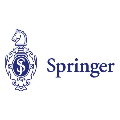Functional connectivity (FC) for quantifying interactions between regions of the brain is commonly estimated from functional magnetic resonance imaging (fMRI). There has been increasing interest in the potential of multimodal imaging to obtain more robust estimates of FC in high-dimensional settings. Recent work has found uses for graphical algorithms in combining fMRI signals with structural connectivity estimated from diffusion tensor imaging (DTI) for FC estimation. At the same time new algorithms focused on de novo identification of graphical subnetworks with significant levels of connectivity are finding other biological applications with great success. Such algorithms develop notions of graphical influence that aid in revealing subnetworks of interest while maintaining rigorous statistical control on discoveries. We develop a novel algorithm adapting some of these methods to FC estimation with computational efficiency and scalability. Our proposed algorithm leverages a graphical random walk on DTI data to define a new measure of structural influence that highlights connected components of maximal interest. The subnetwork topology is then compared to a suitable null hypothesis using permutation testing. Finally, individual discovered components are tested for significance. Extensive simulations show our method is comparable in power to those currently in use while being fast, robust, and simple to implement. We also analyze task-fMRI data from the Human Connectome Project database and find novel insights into brain interactions during the performance of a motor task. It is anticipated that the transparency and flexibility of our approach will prove valuable as further understanding of the structure-function relationship informs the future of network estimation. Scalability will also only become more important as neurological data become more granular and grow in dimension.
翻译:通过功能性磁共振成像(fMRI),通常估计大脑各个区域之间互动的功能连通性(FC)是用来量化大脑区域之间相互作用的功能连通性(FC) 。对于多式联运成像的潜力越来越感兴趣,以便获得对高维环境中FC更可靠的估计。最近的工作发现,图形算法将FMRI信号与结构连通性相结合的图形算法(FMRI信号和FC估计的结构性连通性(DTI)用于FC估计。同时,侧重于取消对具有高度连通性的图形子网络的重新识别的新算法正在发现其他生物应用程序非常成功。这种算法发展了图形影响的概念,有助于披露感兴趣的子网络,同时保持对发现情况的严格统计控制。我们开发了一种新型的算法,将其中一些方法与FC公司估算值进行更可靠的估计。我们提议的算法将利用DTI数据的图形随机行走法来界定新的结构影响度,以突出与最大兴趣的相联的成分。然后,通过调测算法测试,个人发现的组件将具有重大的意义。广泛的模拟显示我们的方法与当前重要结构中的重要结构的比力,同时将逐渐地分析。我们的数据将逐渐地进行。





